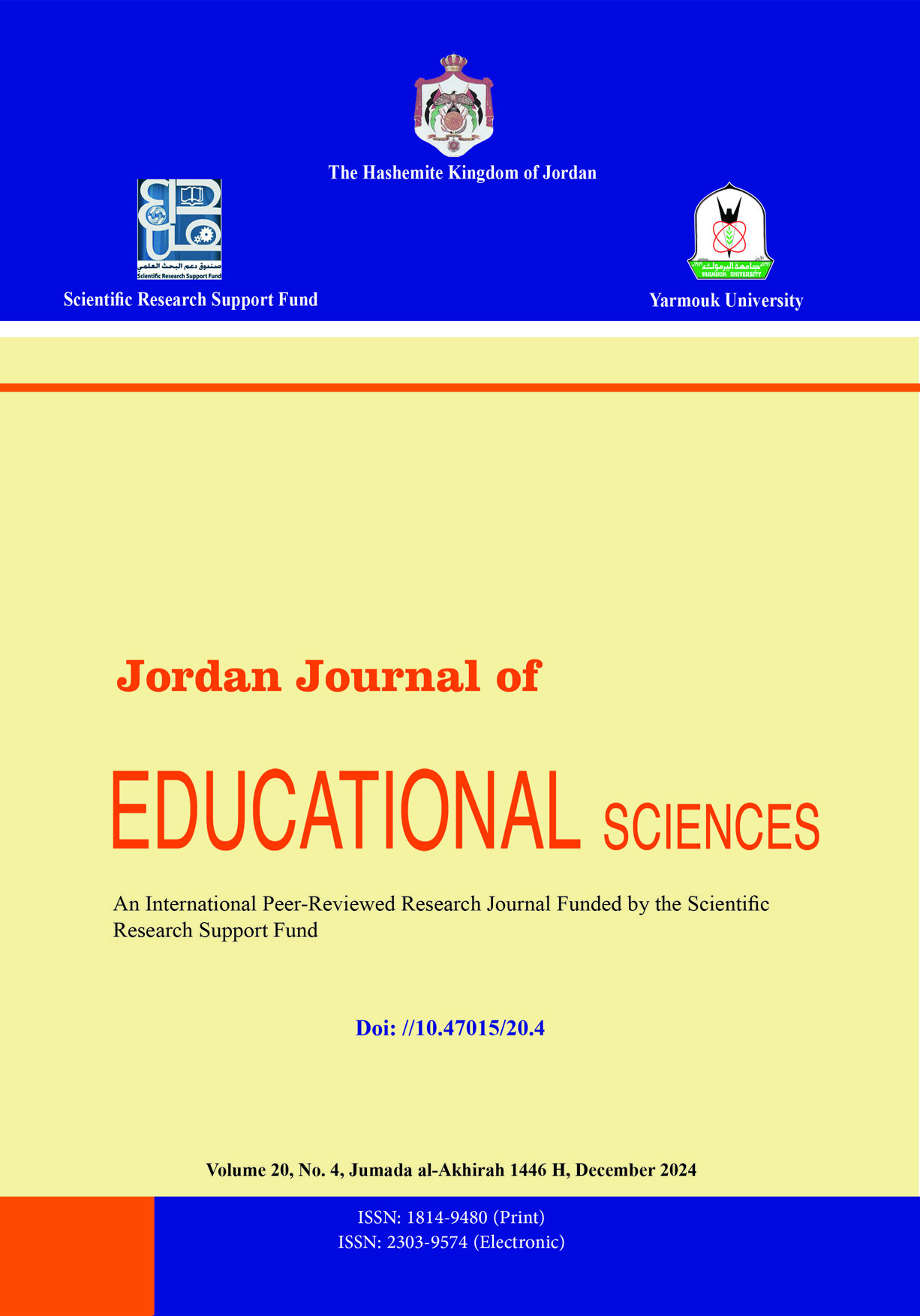القمع الانفعالي وعلاقته باتخاذ القرار المهني لدى طلبة الصف العاشر الأساسي في الأردن
DOI:
https://doi.org/10.47015/20.4.2الملخص
الأهداف: هدفت الدراسة الكشف عن مستوى القمع الانفعالي وعلاقته باتخاذ القرار المهني لدى طلبة الصف العاشر في الأردن. المنهجية: اتبعت الدراسة المنهج الوصفي الارتباطي، ولتحقيق أهدافها؛ استُخدم مقياس كلنر (Kellner, 1986) للقمع الانفعالي، ومقياس القدرة على اتخاذ القرار، اللذان طُبقا على عينة مكونة من ((386 طالبًا وطالبةً تم اختيارهم بالطريقة المتيسرة في الفصل الدراسي الأول 2022/ 2023. النتائج: أشارت النتائج إلى مستوى متوسط من القمع الانفعالي لدى أفراد العينة، باستثناء مجال الخجل، في حين كان مستوى القدرة على اتخاذ القرار مرتفعًا. وأظهرت النتائج كذلك أن العلاقة بين مستوى القمع الانفعالي والقدرة على اتخاذ القرار كانت متفاوتة بين الأبعاد؛ إذ كانت العلاقة سالبة لبعدي الخجل، والقمع اللفظي، في حين كانت موجبة لبعدي ضبط النفس، وتمويه المشاعر، وقد كانت جميعها دالة إحصائيًا. الخلاصة: في ضوء النتائج، توصي الدراسة بضرورة تصميم برامج تدريبية لطلبة الصفوف الأساسية العليا حول التنظيم الانفعالي؛ مما يسهم في الحد من القمع الانفعالي، ومساعدتهم في اتخاذهم قرارات واعية.
الكلمات المفتاحية: القمع الانفعالي، اتخاذ القرار المهني، طلبة الصف العاشر الأساسي.

